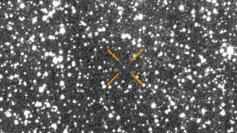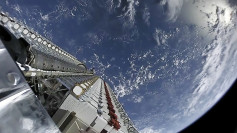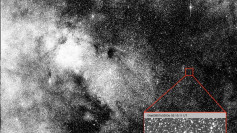The appearance of 3I/ATLAS, the third confirmed interstellar object to pass through our solar system, has reignited fears about what might happen if such a cosmic visitor were ever on a collision course with Earth. Detected on July 1, 3I/ATLAS recently made its closest approach to the Sun and is now moving past Earth at a distance scientists consider completely safe. Yet, the interstellar traveler has inspired sobering new research into what parts of our planet would suffer most if an object like it were to strike.
According to a study titled The Distribution of Earth-Impacting Interstellar Objects, published on arXiv and first reported by Universe Today, the danger zone lies squarely over the areas where most of humanity lives. The research concludes that low latitudes-regions near the equator-face the highest probability of impact from an interstellar object (ISO). The Northern Hemisphere, home to roughly 90% of the global population, is also vulnerable, but the equatorial belt remains the most at-risk area for devastation.
The authors explained their approach: "In this paper, we calculate the expected orbital elements, radiants, and velocities of Earth-impacting interstellar objects." Their simulations modeled streams of hypothetical ISOs intersecting Earth's orbit to pinpoint potential collision sites. The results show a striking concentration of risk along the equatorial regions that encompass densely populated nations across South America, Central Africa, and Southern Asia-regions that could see catastrophic loss of life in the event of an impact.
The researchers determined that most ISOs likely originate from M-type stars, also known as red dwarfs, which are the most common stars in the Milky Way. These small, dim stars frequently eject debris into interstellar space due to gravitational disturbances, making them key sources of objects like 3I/ATLAS. By studying how these ejections occur and how such bodies move through the galaxy, scientists can better anticipate the trajectories of future interstellar visitors.
Their findings show that Earth's exposure to such objects depends heavily on two main approach directions: the solar apex-the direction in which the Sun moves through the Milky Way-and the galactic plane, the flat, disk-shaped region where most of our galaxy's stars are located. The interplay between Earth's orbit and these galactic reference points helps determine both the timing and angle of potential impacts.
The study also highlights a crucial factor that determines the danger posed by ISOs: speed. Paradoxically, slower-moving interstellar objects are more dangerous than faster ones because the Sun's gravitational pull can capture them more easily, altering their trajectories toward Earth. These slower ISOs would be most likely to reach Earth during the winter months, when the planet's orbit places it on the far side of the Sun relative to the galactic plane.
Faster ISOs, by contrast, are less likely to be captured but could arrive during the spring, when Earth moves toward the solar apex. This timing effect means that certain months may bring an elevated likelihood of intersecting interstellar debris.
Although 3I/ATLAS itself will miss Earth by a wide margin, scientists say the event underscores how little is still known about interstellar threats. The study's authors argue that these findings should push for greater investment in early detection systems capable of spotting fast-moving, high-velocity interstellar objects that may enter the inner solar system with little warning.




